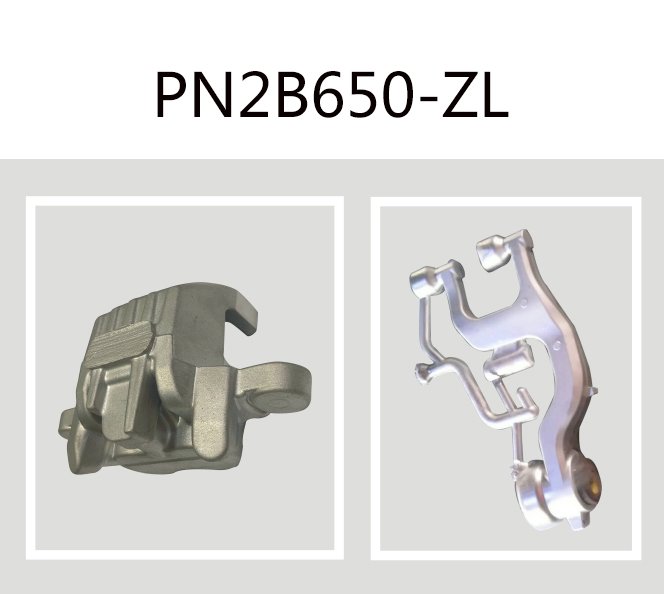Die casting is a metal casting process that involves pressing molten metal into a mold cavity, where it cools and solidifies to form the desired shape. It is a widely used manufacturing process in industry due to its efficiency, accuracy and flexibility. Two commonly used die casting methods are gravity die casting and pressure die casting. Let’s take a look at what the difference is between the two, and the pros and cons of both casting styles.

Gravity Die Casting
Gravity die casting, also known as permanent mold casting or gravity casting, is a casting process in which molten metal is poured into a mold cavity by the gravity of a gravity die casting machine.A mold is designed to have the desired shape of the part to be cast, and it is made of steel or other durable material. A mold cavity is formed from two or more halves that are held together using clamps. Allow the metal to cool and solidify in the cavity, then open the mold and remove the part.
One of the main advantages of gravity die casting is its efficiency. Gravity die casting can produce complex shapes with high precision in a short time. In addition, the molds used in gravity casting have a relatively long service life, making them cost-effective for manufacturing high-volume parts. Gravity die casting is also less prone to porosity, a major defect that can occur during casting.
pressure die casting
Pressure die casting, also known as high pressure die casting, is a casting process that uses high pressure to force molten metal into a mold cavity. The mold consists of two halves, and metal is injected into the cavity under high pressure using a piston or plunger. The metal is then allowed to cool and solidify inside the cavity before opening the two halves of the mold to remove the part.
Two processes of pressure die casting
Pressure die casting is divided into cold chamber die casting and hot chamber die casting.
Cold chamber die casting: In this process, molten metal such as aluminum alloy or copper alloy is sprayed into a cold chamber through a nozzle, and then the liquid metal is injected into the mold by high pressure.
Hot Chamber Die Casting: In this process, raw material is heated to a liquid state and then injected through an injection head into a mold that is kept above the temperature that maintains the melting point of the material.
Advantages of pressure die casting
One of the advantages of pressure die casting is its ability to produce complex and precise parts. High-pressure injection ensures a high degree of accuracy and consistency, making it ideal for manufacturing parts with tight tolerances. Die casting is also highly efficient, allowing a large number of parts to be produced in a short amount of time.
However, pressure die casting has some disadvantages. The molds used in die casting are relatively expensive and have a shorter lifespan than gravity casting molds. Die casting is also more prone to porosity, as high pressure injection creates air bubbles in the molten metal. Additionally, pressure die casting requires a higher level of maintenance to prevent die wear.
Compare
Pressure die casting has advantages over gravity die casting in terms of accuracy and precision. High-pressure injection of the metal ensures that the mold cavity is filled with high precision, resulting in precise and consistent parts. However, both methods can produce complex shapes, with gravity die casting being more cost-effective for high volumes.
Gravity die casting has advantages over pressure die casting in terms of durability and longevity. The molds used in gravity casting are made of durable materials that can withstand high temperatures and pressures, resulting in a long service life. Additionally, gravity die casting is less prone to porosity, making it ideal for cast parts that require high structural integrity.
From the perspective of efficiency, the efficiency of these two methods is very high, and a large number of parts can be produced in a short period of time. However, die casting is slightly faster due to the high pressure injection of metal into the mold cavity.
pros and cons
Gravity Die Casting
advantage
- Cost-effective for high-volume production
- High accuracy and precision
- Low porosity
- Long mold life
- Suitable for castings with high structural integrity
shortcoming
- Limited to simple and moderately complex shapes
- slower than die casting
- Not suitable for producing parts with tight tolerances
pressure die casting
advantage
- High accuracy and precision
- Suitable for complex shapes
- High efficiency in mass production
- Faster than gravity casting
shortcoming
- Expensive tooling
- Shorter mold life
- More prone to porosity
- Requires higher maintenance
Both gravity die casting and pressure die casting are effective methods of die casting. Each method has its advantages and disadvantages, depending on the specific requirements of the part being manufactured. Gravity die casting is ideal for manufacturing high volume parts with simple and moderately complex shapes, while pressure die casting is suitable for producing complex shapes with tight tolerances. Ultimately, the choice between these two approaches depends on the specific needs and desired outcomes of the manufacturer.

